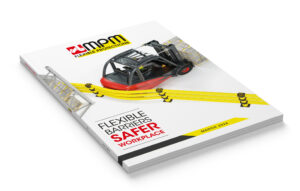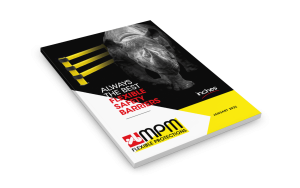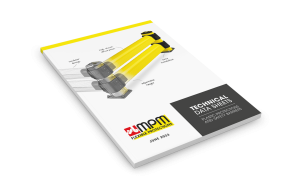1 April 2021 | 
THE DIFFERENCE BETWEEN BARRIERS MADE OF MPM TECHNOPOLYMER AND STEEL
Industrial protections

The main aim of safety barriers is to protect people, vehicles, machinery and infrastructure.
The resulting costs and benefits depend greatly on the choice of material used for the barrier.
The market currently offers common steel barriers, usually used on roads, and the innovative MPM polymer, which is much more suitable for industrial use. Let’s find out why.
PROTECTION LEVEL AND IMPACT RESISTANCE
Once a metal barrier has been impacted, it deforms and is no longer able to provide perfect protection. Moreover, being a rigid obstacle, it causes serious physical repercussion to the driver of a vehicle involved in an accidental impact.
MPM barriers have a very innovative and unique design, and are made of REFLEX, a very flexible technopolymer that can withstand impact from moving trucks. Their strength has been tested and certified by TÜV SÜD.
This perfect combination makes MPM barriers an ally to increase operator safety awareness, drastically reduce the risk of collisions, and decrease accidents and injuries. This makes the work environment safer and ensures greater efficiency without downtime.
LONG-TERM RETURN ON INVESTMENT
Steel protective solutions involve high routine maintenance costs. In fact:
- Moisture causes rusting, making them less visible and therefore hazardous to operators and loads being handled;
- Impact permanently deforms them, so they must be replaced to ensure continued protection;
- The material is rigid and transfers the energy to the floor, breaking the concrete, which then needs to be repaired.

MPM REFLEX barriers offer strength and flexibility, and their ability to bend and return to their original shape means they can absorb the energy from repeated impacts. This means that the energy is dissipated rather than being transferred to the ground or impacting body, so:
- the floor is preserved undamaged;
- vehicles are undamaged;
- no replacement or repair costs after impact;
- the protection remains highly visible and coloured, with no need for repainting.






